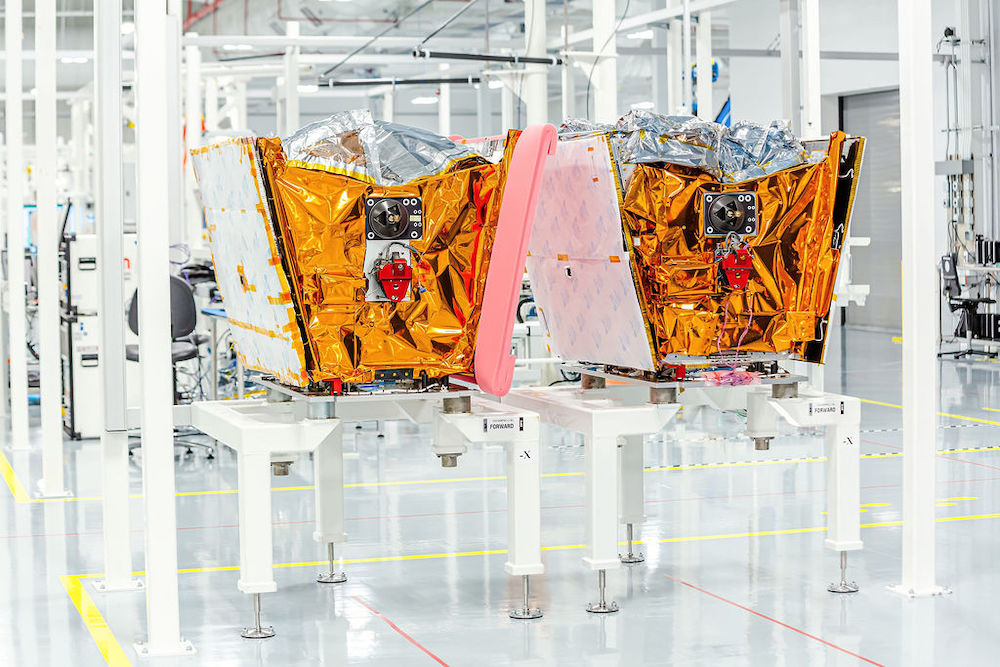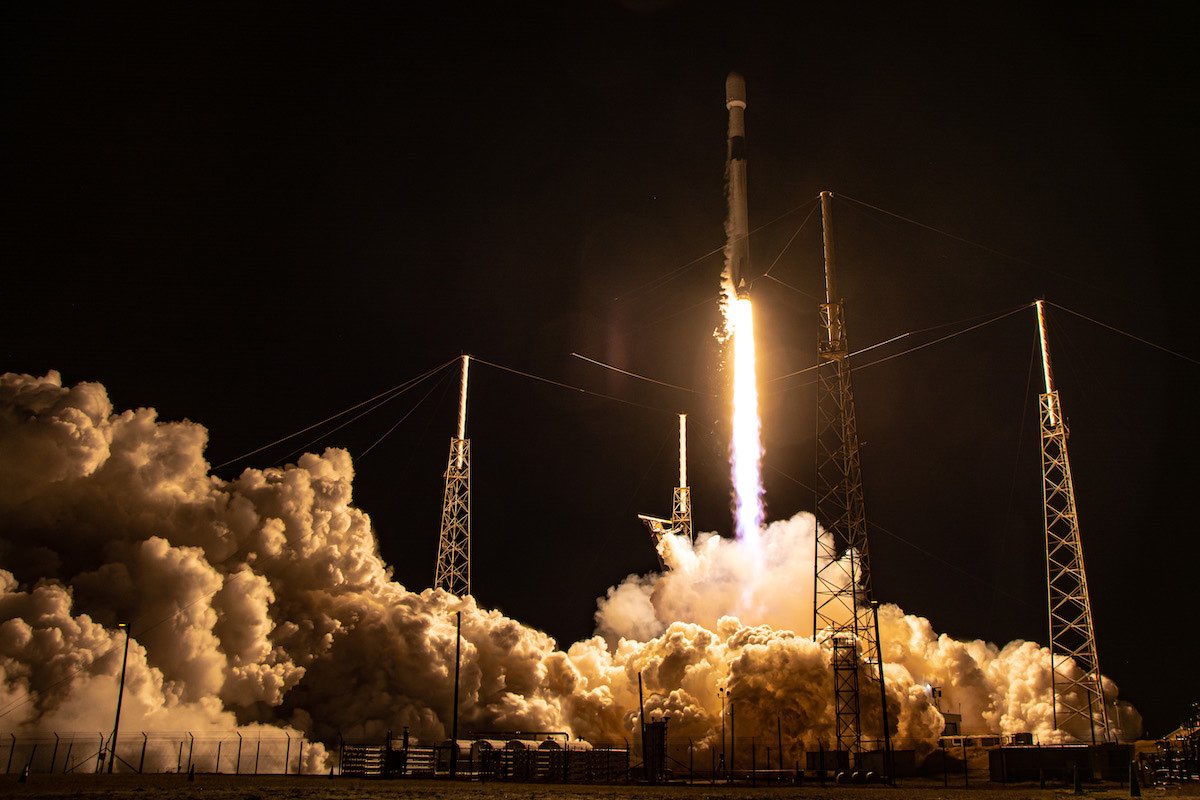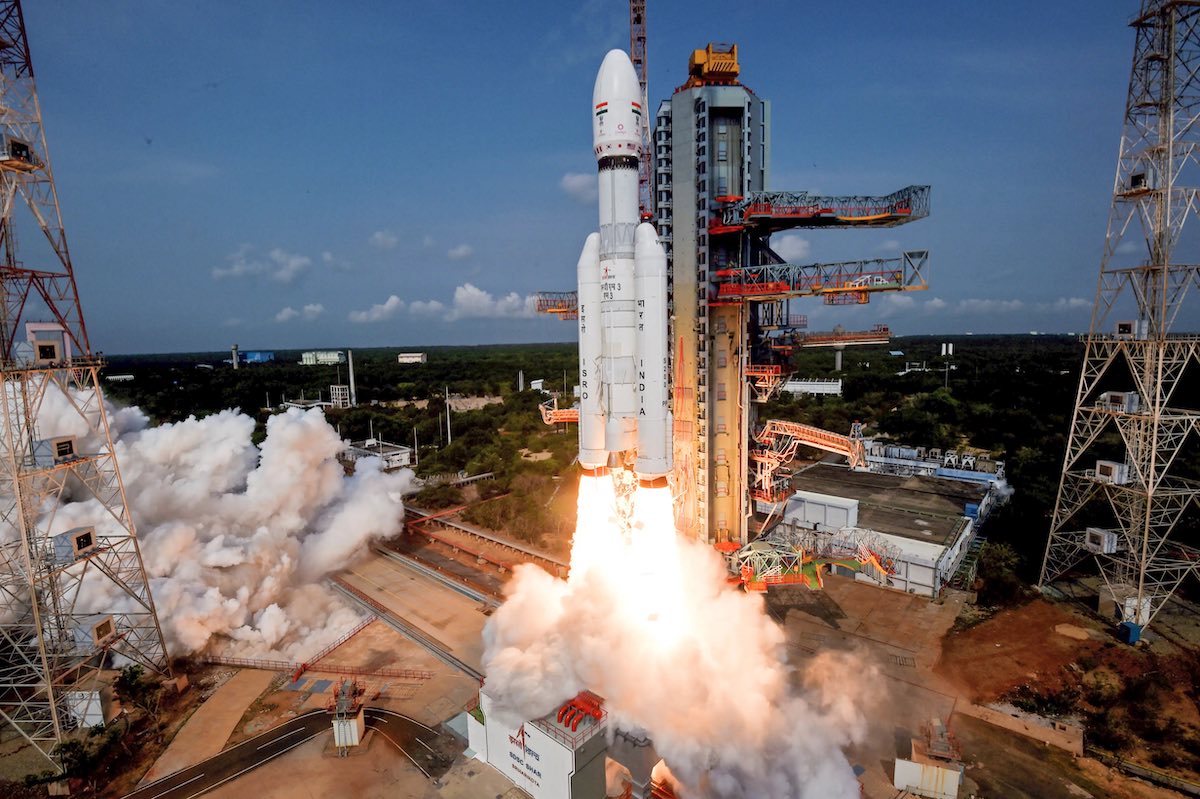
SpaceX is preparing for its 100th orbital launch of the year for its Falcon family of rockets. It will reach this first-time milestone by launching OneWeb’s final batch of its first generation internet satellites.
The mission, dubbed OneWeb Launch #20, is set to liftoff from Vandenberg Space Force Base at 10:13 p.m. PDT on Saturday, Oct. 19 (1:13 a.m. EDT, 0513 UTC on Sunday, Oct. 20).
Spaceflight Now will have live coverage beginning about 30 minutes prior to liftoff.
The Falcon 9 first stage booster for this mission, tail number B1082 in the SpaceX fleet, will be launching for a seventh time. It previously supported USSF-62 and five Starlink missions.
A little less than eight minutes after liftoff, B1082 is set to return to Vandenberg for a propulsive touchdown at Landing Zone 4 (LZ-4). If successful, this will make the 21st booster landing at LZ-4 and the 77th land landing for SpaceX to date.
OneWeb Gen. 1 finale
The journey to cap off the first generation of OneWeb’s satellite internet constellation has been anything but a straight line to the end. OneWeb had to turn to multiple launch providers to complete its constellation of 634 satellites with Launch 19 on May 20, 2023.
It’s original plan for the Gen. 1 constellation was to have 648 satellites in orbit. The 20 satellites onboard Launch #20 will put it well over that threshold.
The first batch of six satellites launched on Feb. 27, 2019 on a Soyuz rocket, which lifted off from French Guiana. The company hoped to begin monthly launches starting in January 2020, but Launch #2 didn’t happen until February 2020, when 34 satellites launched on a Soyuz rocket from the Baikonur Cosmodrome.
While the third launch did happen about a month later out of Baikonur, the fourth launch from Russia’s Vostochny Cosmodrome was delayed until December 2020 due to OneWeb’s bankruptcy woes and subsequent acquisition by Bharti Global, an Indian conglomerate, and the UK government.
The fifth, sixth, seventh and eighth launches took place at Vostochny on March 25, April 25, May 27 and July 1 respectively. Launch #9 saw a return to Baikonur on Aug. 22, 2021, adding another 34 satellites to bring the total of 288 on orbit at that point.
Launch #10 lifted off from Baikonur on Sept. 14, 2021, Vostochny for Launch #11 on Oct. 14, 2021, back to Baikonur for Launch #12 on Dec. 27, 2021, and then back to French Guiana for Launch #13 on Feb. 10, 2022.
However, OneWeb hit a big roadblock as it heading into the planned Launch #14 mission. With Russia’s invasion of Ukraine, OneWeb announced its suspension of ties with Roscosmos just days before the planned launch in March 2022. The satellites for that mission remain in Russia to this day.
“The Board of OneWeb has voted to suspend all launches from Baikonur,” OneWeb said in a brief statement at the time. The company wasn’t happy to lose its launch provider, since it was will under contract with Arianespace to fly onboard six more Soyuz rockets to complete its constellation.

Later in March, OneWeb announced launch agreements with both SpaceX and the Indian Space Research Organization to launch its remaining satellites on three Falcon 9 rockets and two Launch Vehicle Mark-3 (LVM3) rockets.
Those Falcon 9 launches took place on Dec. 8, 2022, Jan. 10, 2023, and Mar. 9, 2023, (Launch #15, #16 and #17 respectively) from Cape Canaveral Space Force Station, close to where the satellites are manufactured at the Airbus OneWeb Satellites facility on Merritt Island.
ISRO completed Launch #14 and #18 on Oct. 22, 2022, and March 25, 2023, from the Satish Dhawan Space Centre in Sriharikota, India.
OneWeb then announced in May 2023 that it was planning to launch another 16 satellites onboard the Launch #19 mission from Vandenberg Space Force Base, which included a demonstration satellite for its Gen. 2 fleet called “JoeySat.”
“Developed through the European Space Agency and UKSA Sunrise Partnership programme, JoeySat carries an innovative payload design which will demonstrate digital regenerative processing, electronically steered multi-beam arrays, and digital beamforming and beam-hopping technologies,” OneWeb wrote at the time. “These capabilities, planned for OneWeb’s Gen 2 constellation, will offer more flexibility and capacity to customers, optimizing resources to manage real-time surges in commercial demand or to enable rapid responses to emergencies such as natural disasters.”
Since that launch, OneWeb entered into a partnership with Eutelsat to form the Eutelsat Group, combining the capabilities of the company’s low Earth orbit and geostationary Earth orbit satellites.


